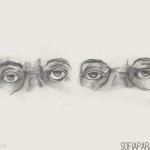Ectropion is a condition in which your eyelid — typically the lower lid — turns out. This leaves the inner eyelid surface exposed and prone to irritation. Ectropion is more common in older adults. In severe ectropion, the entire length of the eyelid is turned out. When ectropion is less severe, only one segment of the eyelid sags away from the eye. Artificial tears can help relieve the symptoms caused by ectropion until you can have surgery to correct the condition.
Ectropion can be a result of muscular loss of tone due to ageing, facial paralysis, scarring, skin neoplasm, irradiation of the area, some medication or it can be congenital.
The operation
When the cause of ectropion is ageing or congenital, then it’s corrected according the Kunht-Szymanowski technique. In the rest of cases, the factor causing the ectropion has to be treated, whether this is a scar, a skin tumor. In most cases a full thickness skin graft is used, taken from the contralateral upper eyebrow or the skin area behind the ear.
Complications
Under_ or overcorrection needing re-operation to be restored. When it’s senile ectropion, there is a high possibility of recurrence within years following the reconstruction. Usually it takes about 1-3 months for preoperative symptoms to subside postoperatively. When a graft is used, the major complication is partial rejection of the graft (2-30%). Full thickness skin grafts shrink in time at about 20% of the total surface.
After the operation
If a skin graft was used, it’s covered with a tie-over gauze that has to be left in place for 5 days. You will be discharged from the hospital on the next day. Pain is moderate and controlled by tablets. You have to apply ophthalmic ointment on the area for 15 days. Sutures are removed after 7 days.



